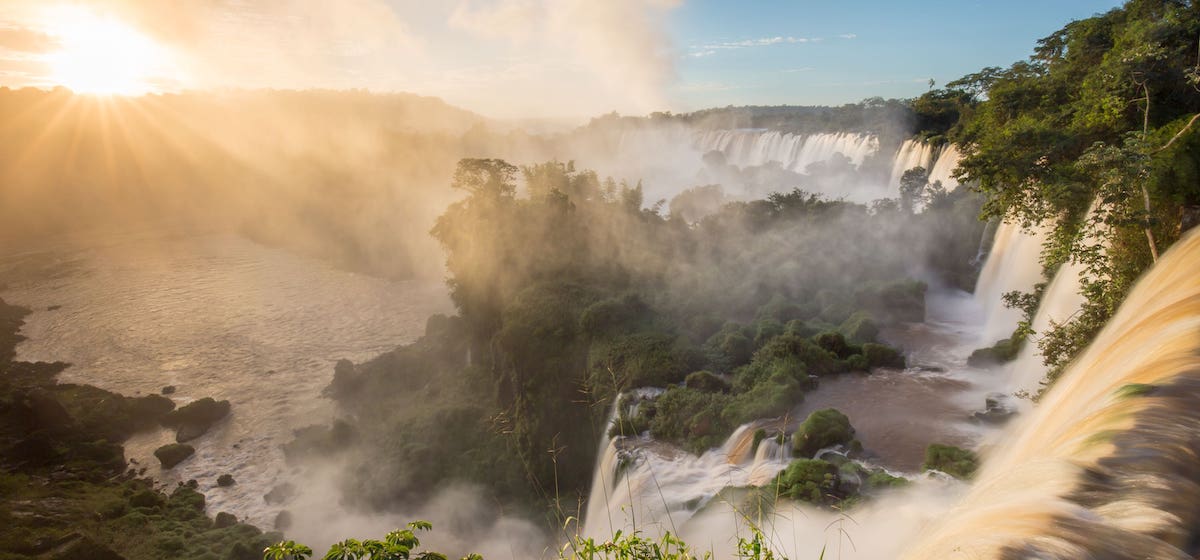Imagine waking up below a curtain of waterfalls, so thunderous they could drown out even the fiercest cavalry charge. It was a reality for Spanish vagabond Guillermo Larregui, who arrived at Iguazu Falls with his belongings in a wheelbarrow, and built a temporary scrap metal home next to the raging cataract.
He’d travelled more than 22,000km across Argentina, but chose to stay put in the jungles of Misiones, and died in the shadow of the falls in 1964.
Of course, today it would be tricky to get that close to Iguazu’s natural wonder; even entering the national park out of hours is impossible.
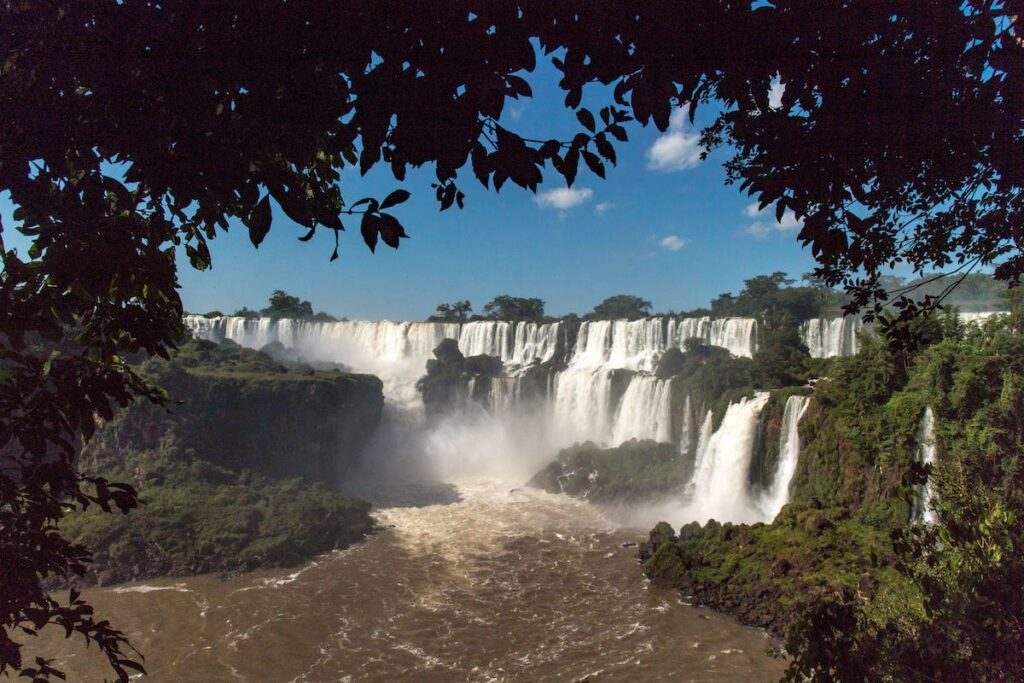
Or, it was until more recently.
Now there’s an ambitious boutique adventure hotel in the 600-hectare buffer zone surrounding the park, a 20-minute drive from the entrance gates. Taking 10 years to plan and build, the 14-lodge property promised to show visitors a different side to the falls, exploring the landscape and culture connected to the tourist attraction, which can attract up to 28,000 visitors per day.
Crucially, Awasi Iguazu also secured restricted early-morning access to the park for birdwatching tours, giving guests the opportunity to experience the sounds and sights Larregui might have enjoyed. And I got the chance to discover it all too …
Comfort in the wilderness
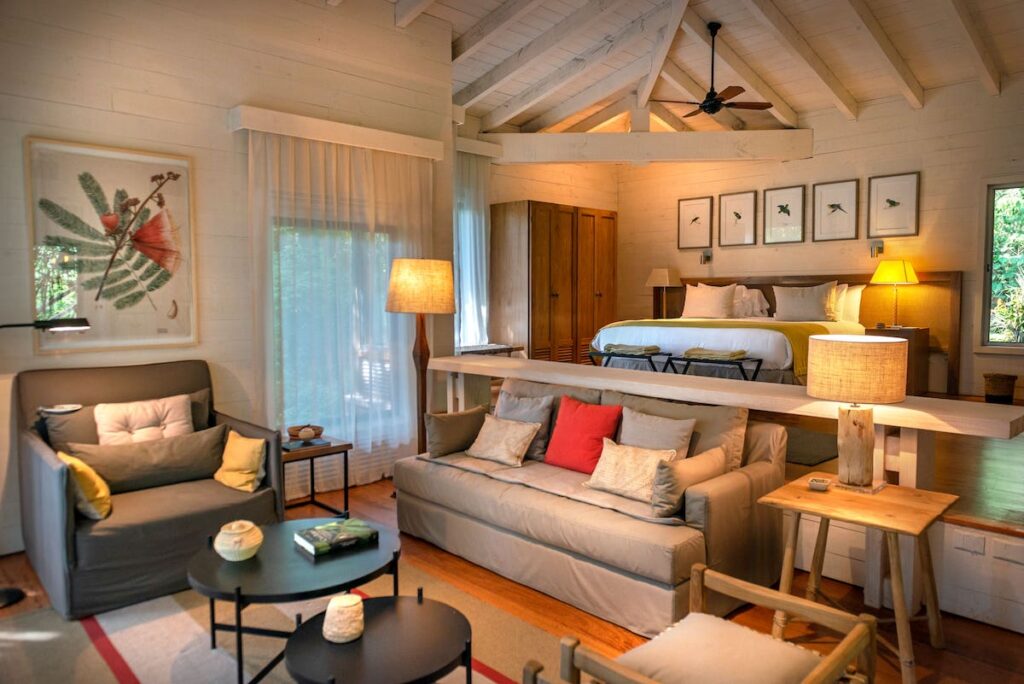
Tapping their bills, toucans rustle in the branches above me, rummaging through the jungle for their breakfast in a bleary early morning state. Even without opening my eyes, I can detect the sweet smell of fresh wood, locally sourced and used to construct my vast lodge at Awasi Iguazu.
Designed with the intention of bringing the outside in, rooms are decorated with botanical illustrations, large windows spilling onto private pool terraces and walkways embraced by the emerald arms of the Atlantic rainforest.
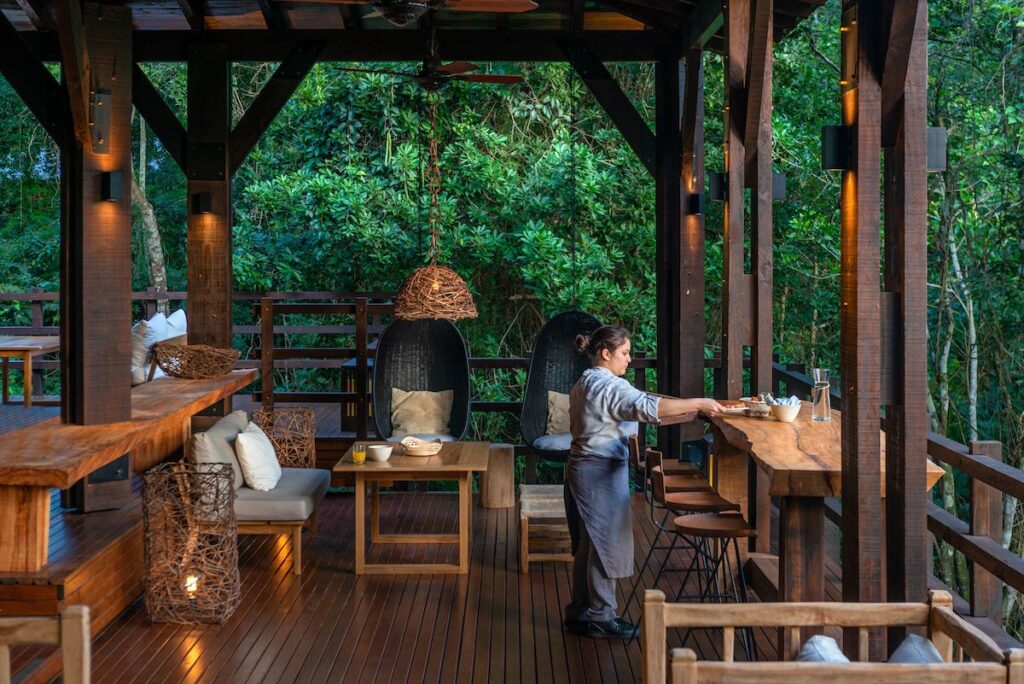
Awasi’s point of difference, however, comes into play outside these four walls. Unique in South America, they operate a private guide system, and Maria, my eyes and ears of the jungle, crafts a bespoke itinerary with the use of our own private vehicle.
Witnessing the mighty falls
The falls are undoubtedly the main attraction in this region. Curving 2.7km across Argentina and Brazil, 250 cataracts spill over the Paraná Plateau, although that number can vary depending on the rains.
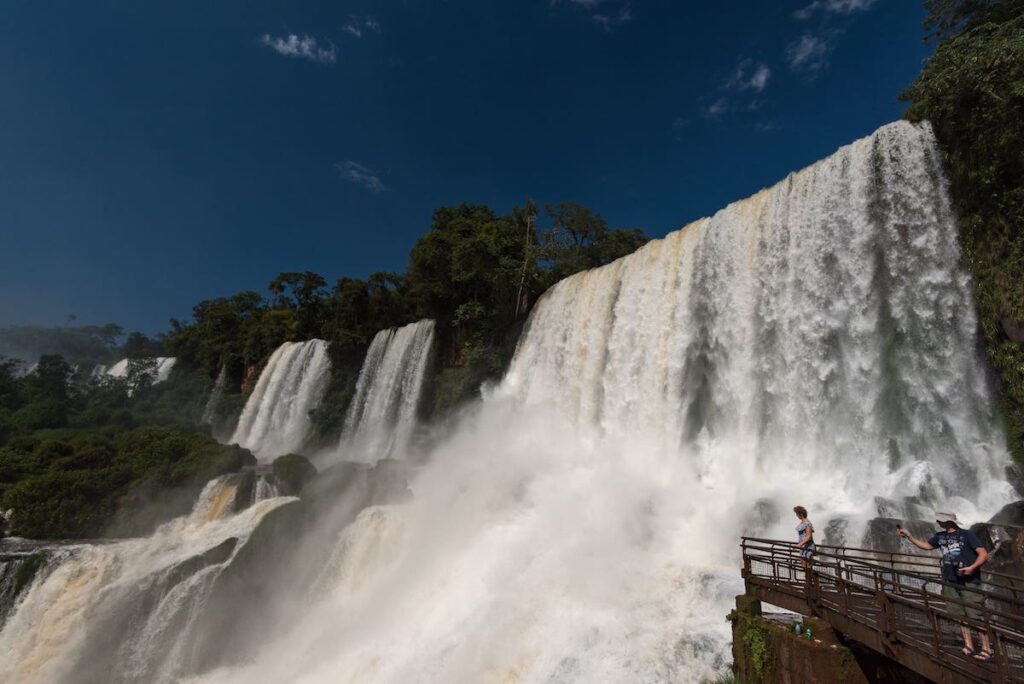
The first white man to ‘discover’ Iguazu (meaning ‘big water’ in native language Guarani) was Spanish explorer Alvar Núñez Cabeza de Vaca in 1541. The Spanish crown later gave the land to the Ayarragaray family and it was only declared a national park in 1934. Tourism developed slowly, although improved infrastructure in 2000 saw an influx of visitors that continues.
“Here, you don’t just see the falls – you feel them,” insists Maria, extolling the virtues of exploring the Argentinian side of the falls rather than the Brazilian segment – an area ironically three times as big but with far fewer walkways.
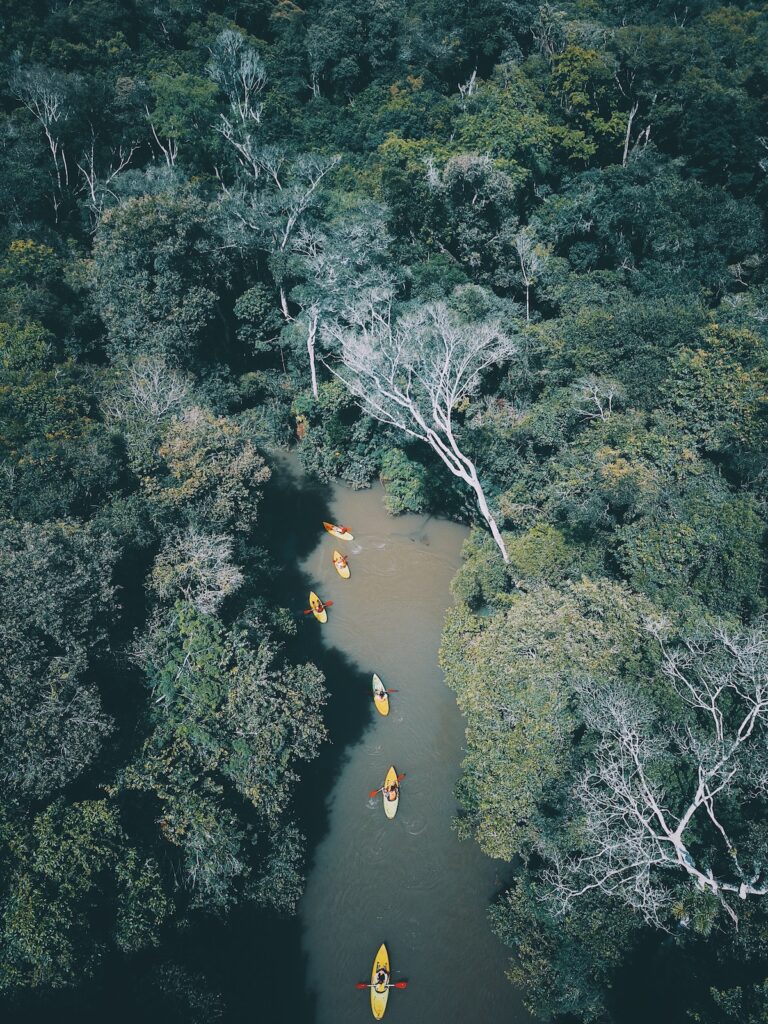
That sensory overload is certainly true at the Devil’s Throat, where an elevated platform pokes into the jaws of the largest and most furious cataract. I’m drenched by spray carried on arbitrary gusts of wind, and deafened by a roar that stretches for eternity. Yellow butterflies perform daredevil spirals through the mist, and great dusty swifts deftly skim their wings across the curtains as if strumming a harp.
Delving deep into the forest
By mid-morning, crowds have descended on the park, shattering nature’s peace with their constant chatter and snapping of selfie sticks.

Sensing my need for solitude, Maria takes me to the Yacu-i Reserve, a protected forest area partially managed by the lodge, reached by a two-hour drive along National Road 101 followed by a rough track carved into the burning-red earth.
We’re greeted by Mr Kelm, a tall, spindly farmer who’s lived here so long his own body appears to be competing with the towering rosewood trees. He’s kindly floated two plastic kayaks, which we use to paddle along a tributary of the Iguazu River.
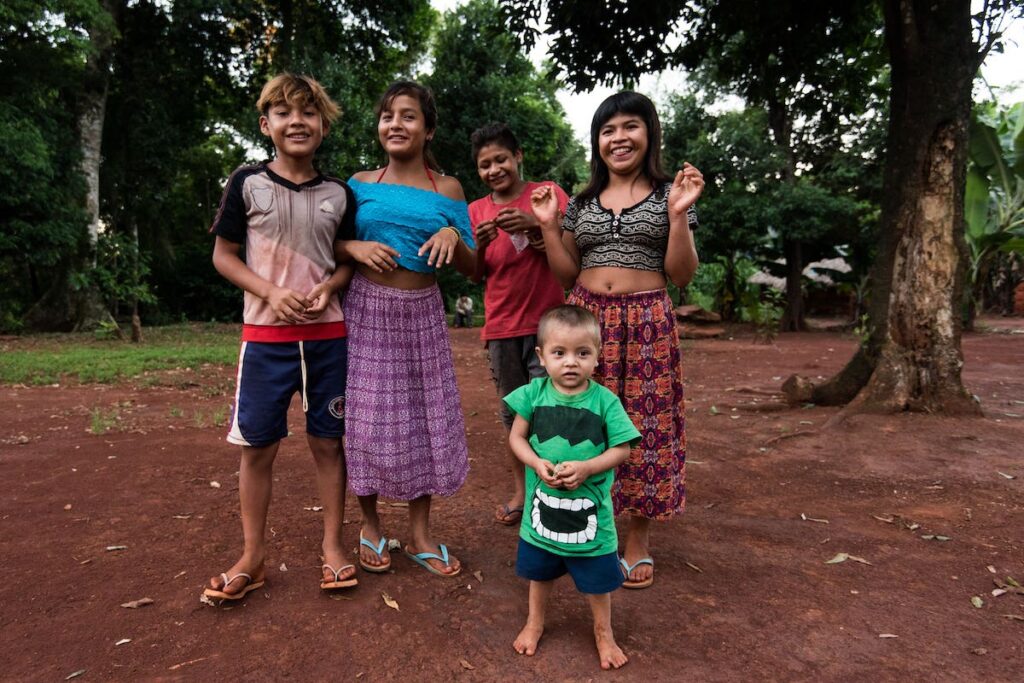
A latticework of silky webs stretches from one bank to the next – testament to the strength of a golden orb spider’s spinnerets and the fact so few people glide along these waters. Surprised by our presence, tingasu – or squirrel cuckoos – scurry into the high canopy, curiously watching these two-legged creatures who rarely pass their way.
Meeting the original caretakers
People have been part of the Iguazu ecosystem for centuries, long before Spanish conquistadors ploughed across the province. The original inhabitants were the Guarani, an indigenous group now spread across Argentina, Brazil and Paraguay.
Neighbouring Awasi, the community of Jasy Bora (Pretty Moon) has an agreement with the lodge to take guests on short tours of their village.

Barefoot children scamper playfully between mud brick houses, while a shaman decorated with feathers strings up garlands of dried yerba mate around a ceremonial ground.
My guide is Sergio, a 21-year-old father of two dressed in Nike trainers and a football shirt. Despite the modern attire, this shy young man is still guided by his ancestors: time is judged according to the flowering of native plants and happiness is measured by the size of the forest and connection to nature.
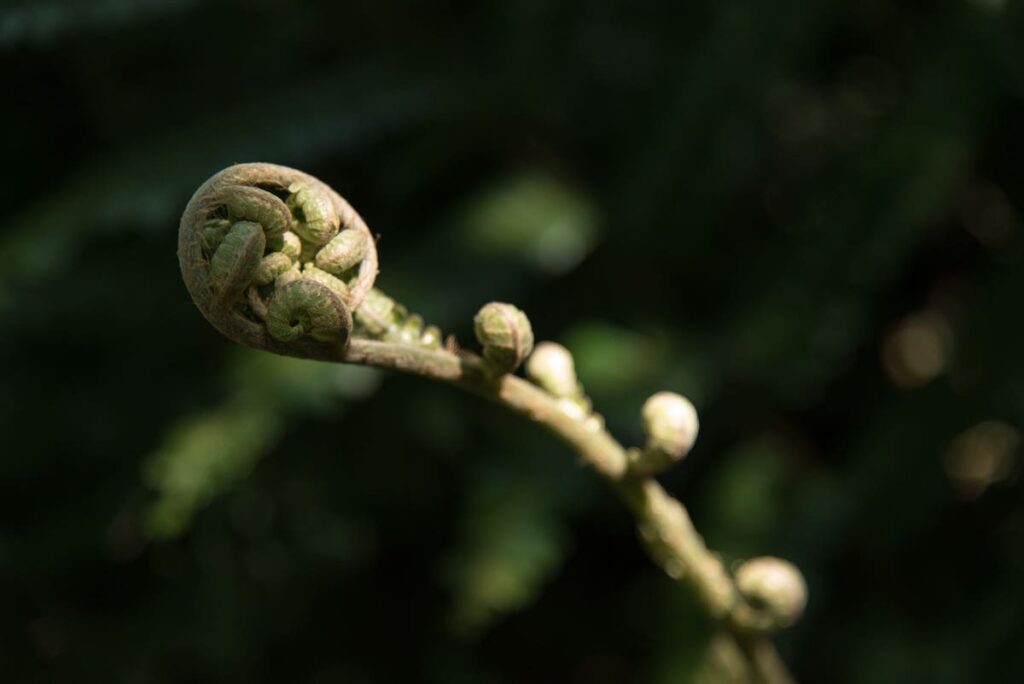
At one time, Guarani territories would have spread undisturbed for miles, but with roads now knocking at their doorways, I suspect challenging times lie ahead.
Yet Sergio can only think about the present; in the Guarani mindset, past and future simply don’t exist.
“They call us the man who speaks a lot but says very little,” whispers Maria, pushing past coils of ancient ferns and tiptoeing over processions of meaty black ants.
In contrast, Sergio’s expression says it all.
Gazing up at a roof of interlaced leaves casting dancing spotlights of sunshine on the iron-rich soil, he doesn’t utter a word. He only smiles.
Have you visited Argentina? What’s the most unique hotel you have stayed in?
If you enjoy our content, don’t keep it to yourself. Share our free eNews with your friends and encourage them to sign up.
Related articles:
https://www.yourlifechoices.com.au/travel/destinations/taking-on-torres-del-paine
https://www.yourlifechoices.com.au/travel/embrace-the-future-by-learning-how-to-hug-a-tree-in-italy
https://www.yourlifechoices.com.au/travel/budget-south-america-tours

